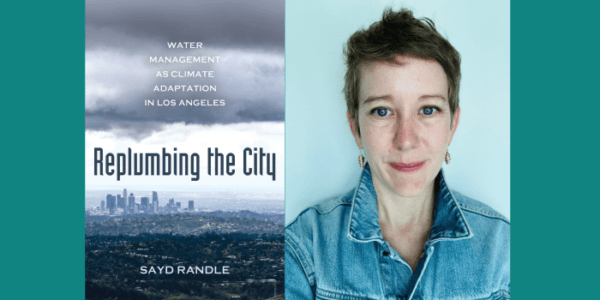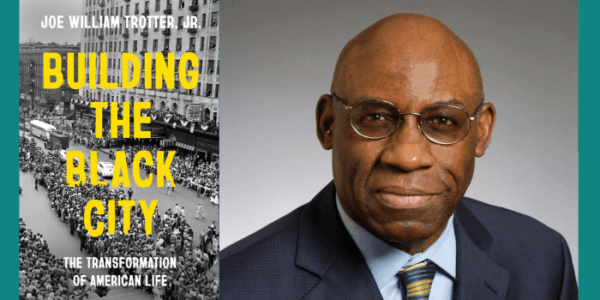13 Results

Q&A with Sayd Randle, author of "Replumbing the City"
Mar 20 2025
Author Sayd Randle discusses their new book "Replumbing the City: Water Management as Climate Adaptation in Los Angeles"

House-building in Dar es Salaam, Tanzania
Mar 19 2025
Author Claire Mercer talks about her new book and how the suburb and the middle classes construct each other.

Gentrification Isn’t Just Happening in Cities. It’s Also Happening in America’s Suburbs
Mar 04 2025
In “The Right to Suburbia,” Willow S. Lung-Amam details who’s benefitting from redevelopment in Washington, D.C.’s suburbs – and who’s being pushed out.

Q&A with Joe William Trotter, Jr., author of "Building the Black City"
Nov 08 2024
In "Building the Black City," Joe William Trotter, Jr., traces the growth of Black cities and political power from the preindustrial era to the present.

Ten years after the death of Michael Brown, the conditions that led to the uprisings remain
Aug 09 2024
Today is the ten-year anniversary of Michael Brown’s death and a critical moment to reflect on the uprisings. While some view these contemporary revolts as solely driven by police aggression, our modern unrest narrative is more complex. Through interviews for my new book Slow and Sudden Violence, Ferguson and Baltimore community leaders identified police brutality as a cause of the uprisings, but they also voiced other significant frustrations.

Q&A with Walter J. Nicholls, Series Editor of IJURR
Apr 16 2024
The IJURR Book Series has established itself as a cornerstone in the field of global urban studies, pushing the boundaries of critical, interdisciplinary, and theory-driven urban research across the globe. Entering a new phase with its partnership with UC Press starting in 2024, the IJURR Book Serie

Why Small U.S. Cities are Acting like Reality TV Stars
Mar 20 2023
By David A. Banks, author of The City Authentic: How the Attention Economy Builds Urban AmericaWe’ve all seen headlines featuring interesting commentary on U.S. cities’ images or brands. In the lead up to my new book, The City Authentic: How the Attention Economy Builds Urban America,I’ve b

The Rise of WFH Will Shift America’s Economic Geography
Dec 14 2022
By Matthew E. Kahn, author of Going Remote: How the Flexible Work Economy Can Improve Our Lives and Our CitiesBefore the COVID Shock, urban economists told a familiar “tale of two cities.” The post-industrial cities such as Baltimore and Detroit continued to lose people because these cities had

What NYC Taught Me About Oakland’s Urban Landscape
Feb 23 2022
By Mitchell Schwarzer, author of Hella Town: Oakland's History of Development and DisruptionIt was the spring of 1964 and the sea air caressed my face as my father drove us along the Belt Parkway in Brooklyn. He pulled off to a rest stop. We got out of the car and raced to the shoreline. “You s

The Understudied Social Lives of Public Transit
Nov 08 2021
By Rashmi Sadana, author of The Moving City: Scenes from the Delhi Metro and the Social Life of InfrastructureOne of the first people I interviewed for my new book, The Moving City: Scenes from the Delhi Metro and the Social Life of Infrastructure, was a woman in her fifties who I call Vanit